Corrosion of Metallic Biomaterials: A Review
- PMID: 30696087
- PMCID: PMC6384782
- DOI: 10.3390/ma12030407
Corrosion of Metallic Biomaterials: A Review
Abstract
Metallic biomaterials are used in medical devices in humans more than any other family of materials. The corrosion resistance of an implant material affects its functionality and durability and is a prime factor governing biocompatibility. The fundamental paradigm of metallic biomaterials, except biodegradable metals, has been "the more corrosion resistant, the more biocompatible." The body environment is harsh and raises several challenges with respect to corrosion control. In this invited review paper, the body environment is analysed in detail and the possible effects of the corrosion of different biomaterials on biocompatibility are discussed. Then, the kinetics of corrosion, passivity, its breakdown and regeneration in vivo are conferred. Next, the mostly used metallic biomaterials and their corrosion performance are reviewed. These biomaterials include stainless steels, cobalt-chromium alloys, titanium and its alloys, Nitinol shape memory alloy, dental amalgams, gold, metallic glasses and biodegradable metals. Then, the principles of implant failure, retrieval and failure analysis are highlighted, followed by description of the most common corrosion processes in vivo. Finally, approaches to control the corrosion of metallic biomaterials are highlighted.
Keywords: biocompatibility; biodegradable metals; biomaterials; body environment; corrosion; failure; metallic glasses; shape memory alloys; stainless steels; titanium alloys.
Conflict of interest statement
The author declares no conflict of interest.
Figures
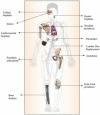

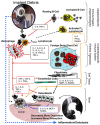

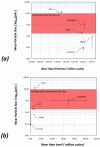







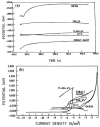









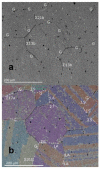
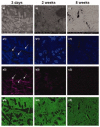
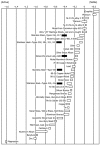


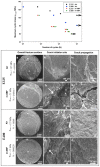



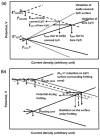

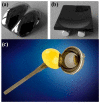

Similar articles
-
Electrochemical corrosion of metallic biomaterials.Biomaterials. 1984 May;5(3):122-34. doi: 10.1016/0142-9612(84)90046-2. Biomaterials. 1984. PMID: 6375748 Review.
-
Effect of Surface Morphologies on the In Vitro and In Vivo Properties of Biomedical Metallic Materials.ACS Biomater Sci Eng. 2024 Oct 14;10(10):6017-6028. doi: 10.1021/acsbiomaterials.4c00942. Epub 2024 Sep 13. ACS Biomater Sci Eng. 2024. PMID: 39269725 Review.
-
Corrosion and surface modification on biocompatible metals: A review.Mater Sci Eng C Mater Biol Appl. 2017 Aug 1;77:1261-1274. doi: 10.1016/j.msec.2017.04.102. Epub 2017 Apr 20. Mater Sci Eng C Mater Biol Appl. 2017. PMID: 28532004 Review.
-
Prospects and strategies for magnesium alloys as biodegradable implants from crystalline to bulk metallic glasses and composites-A review.Acta Biomater. 2020 Feb;103:1-23. doi: 10.1016/j.actbio.2019.12.023. Epub 2019 Dec 24. Acta Biomater. 2020. PMID: 31881312 Review.
-
A review on nickel-free nitrogen containing austenitic stainless steels for biomedical applications.Mater Sci Eng C Mater Biol Appl. 2013 Oct;33(7):3563-75. doi: 10.1016/j.msec.2013.06.002. Epub 2013 Jun 12. Mater Sci Eng C Mater Biol Appl. 2013. PMID: 23910251 Review.
Cited by
-
Using the "One Shot" Concept for Immediate Loading Implant Protocol in Edentulous Patient Rehabilitation with a Fixed Prosthesis: A 6-Year Follow-Up.Case Rep Dent. 2021 Feb 24;2021:8872277. doi: 10.1155/2021/8872277. eCollection 2021. Case Rep Dent. 2021. PMID: 33708449 Free PMC article.
-
Electrophoretic Deposition of Chitosan Coatings on the Porous Titanium Substrate.J Funct Biomater. 2024 Jul 9;15(7):190. doi: 10.3390/jfb15070190. J Funct Biomater. 2024. PMID: 39057310 Free PMC article.
-
Advanced Anticorrosive Graphene Oxide-Doped Organic-Inorganic Hybrid Nanocomposite Coating Derived from Leucaena leucocephala Oil.Polymers (Basel). 2023 Nov 12;15(22):4390. doi: 10.3390/polym15224390. Polymers (Basel). 2023. PMID: 38006114 Free PMC article.
-
The MOVE-C Cervical Artificial Disc - Design, Materials, Mechanical Safety.Med Devices (Auckl). 2020 Sep 25;13:315-324. doi: 10.2147/MDER.S270789. eCollection 2020. Med Devices (Auckl). 2020. PMID: 33061680 Free PMC article.
-
Mechanical Properties and Corrosion Rate of ZnAg3 as a Novel Bioabsorbable Material for Osteosynthesis.J Funct Biomater. 2024 Jan 25;15(2):28. doi: 10.3390/jfb15020028. J Funct Biomater. 2024. PMID: 38391881 Free PMC article.
References
-
- Williams D.F., Black J., Doherty P.J. Consensus report of second conference on definitions in biomaterials. In: Doherty P.J., Williams R.L., Williams D.F., Lee A.J.C., editors. Biomaterial-Tissue Interfaces. Volume 10. Elsevier; Amsterdam, The Netherlands: 1992. pp. 525–533.
-
- Ratner B.D., Hoffman A.S., Schoen F.J., Lemons J.E., editors. Biomaterials Science: An Introduction to Materials in Medicine. 2nd ed. Academic Press; San Diego, CA, USA: 2004.
-
- Williams D.F., editor. Definitions in Biomaterials—Proceedings of a Consensus Conference of the European Society Biomaterials. Volume 4 Elsevier; New York, NY, USA: 1987.
-
- Bronzino J.D., Peterson D.R., editors. The Biomedical Engineering Handbook. 4th ed. CRC Press; Boca Raton, FL, USA: 2015.
-
- Zierold A.A. Reaction of bone to various metals. Arch. Surg. 1924;9:365–412. doi: 10.1001/archsurg.1924.01120080133008. - DOI
Publication types
LinkOut - more resources
Full Text Sources

